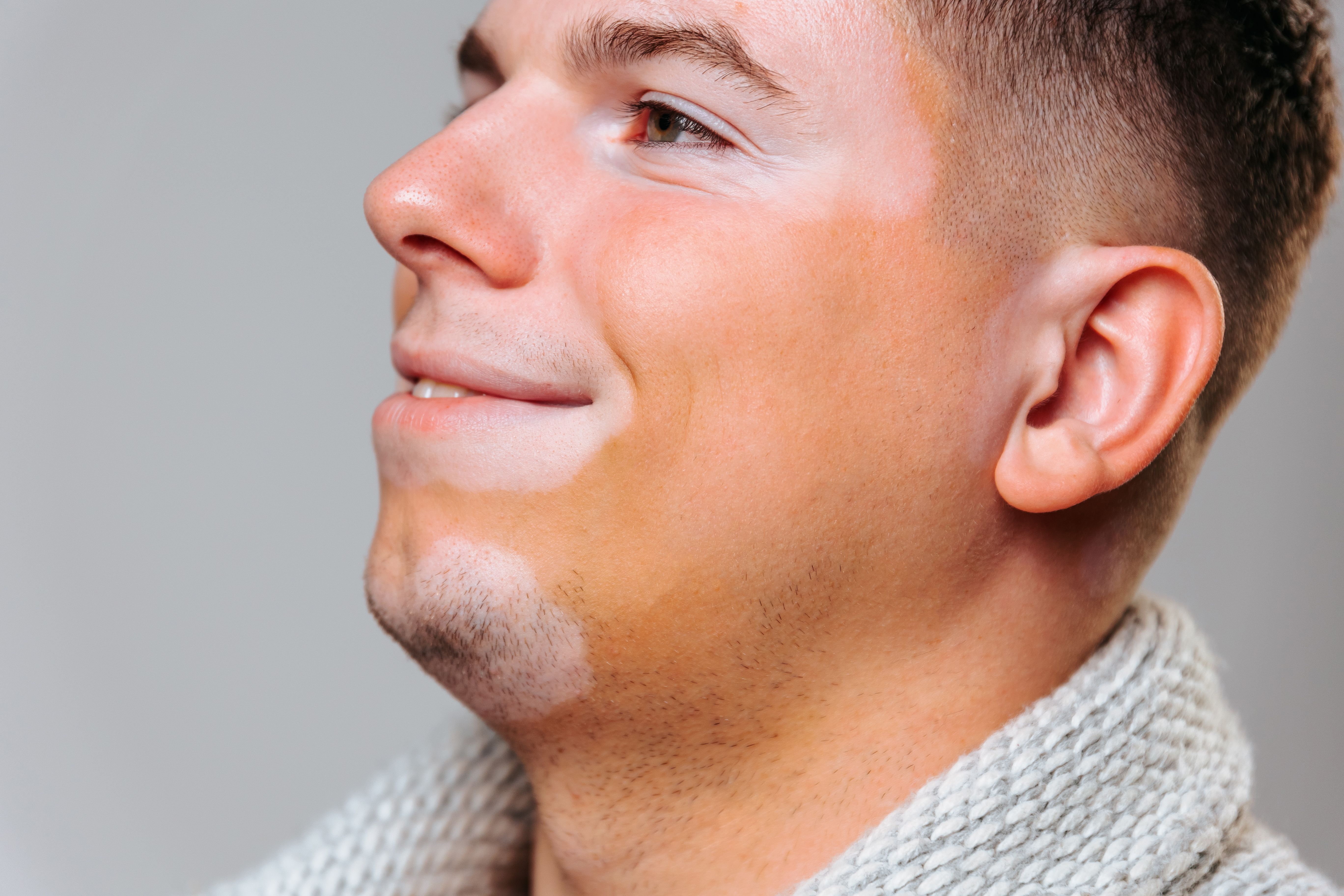- Case-Based Roundtable
- General Dermatology
- Eczema
- Chronic Hand Eczema
- Alopecia
- Aesthetics
- Vitiligo
- COVID-19
- Actinic Keratosis
- Precision Medicine and Biologics
- Rare Disease
- Wound Care
- Rosacea
- Psoriasis
- Psoriatic Arthritis
- Atopic Dermatitis
- Melasma
- NP and PA
- Skin Cancer
- Hidradenitis Suppurativa
- Drug Watch
- Pigmentary Disorders
- Acne
- Pediatric Dermatology
- Practice Management
- Prurigo Nodularis
- Buy-and-Bill
News
Article
VIOLIN Study Examines Extent of Burden of Disease in French Vitiligo Patients
Author(s):
The VIOLIN study examined the burden of disease, prevalence, and treatment of vitiligo in patients in France.
Despite a high burden of disease among vitiligo patients in France, a new study1 has highlighted that most patients with the condition are not receiving treatment.
Alexandr/Adobe Stock

According to investigators Ezzedine et al, vitiligo is prevalent in approximately 0.2% to 0.8% of the European population, and research evaluating and quantifying the prevalence of the condition, as well as its overall disease burden and treatment routes, is lacking.
The VIOLIN study is a cross-sectional study which collected longitudinal data from patients between 2012 and 2018 and is a part of the national CONSTANCES cohort, which gathered data from more than 210,000 adult participants between 2012 and 2020 as part of an epidemiologic research infrastructure.
In 2018, investigators sent out a skin disease questionnaire to participants in the CONSTANCES cohort of patients. This questionnaire assessed vitiligo severity using a 10-point scale. Those who reported having vitiligo in this questionnaire were sent a follow-up questionnaire in 2022 involving vitiligo-specific data such as severity, location on the body, nonprescription treatment, and more. In this current analysis, investigators included participants who had completed both questionnaires, had received a diagnosis confirmed by a physician, and who reported a presence of persistent vitiligo lesions in 2022.
Respondents who did not report having vitiligo in the 2018 questionnaire were matched using a 3:1 ratio with patients with vitiligo.
Assessment scales used in the analysis included the Self-Assessment Vitiligo Extent Score, EuroQoL 5-Dimensions 5-Levels questionnaire, Dermatology Life Quality Index, Patient Unique Stigmatization Holistic Tool in Dermatology, Vitiligo Impact Patient scale, Vitiligo-specific Quality of Life, and the Center for Epidemiologic Studies Depression Scale (CES-D).
The initial 2018 questionnaire garnered responses from 99,209 respondents, of which 1,605. In 2022, 72% of participants who had initially indicated having vitiligo completed the questionnaire. In total, 681 patients with vitiligo were included in the analysis, as they had reported the persistence of physician-diagnosed vitiligo in 2022. Physician-diagnosed vitiligo was prevalent in 0.71% of all respondents.
After being age and sex- matched to patients who did not have vitiligo (n=2,043), investigators found that autoimmune comorbidities such as thyroid disease and type 1 diabetes were more common in patients with vitiligo. Furthermore, additional skin conditions such as atopic dermatitis, alopecia areata, and psoriasis were more prevalent among patients with vitiligo than patients without the condition.
Patients with vitiligo reported worse levels of general health, including lower levels of overall satisfaction with their lives, than patients without the condition. Additionally, 17.5% of vitiligo patients had a CES-D score equal to or greater than 19, which is considered the standard assessment of depression in France; this can be compared to a rate of 14.3% in respondents without vitiligo.
Regarding therapeutic management of vitiligo, the majority (83.8%) of patients had not been prescribed any treatments for their vitiligo in 2019, though nearly half (43.4%) reported having purchased a nonprescription treatment such as sunscreen, cosmetics, supplements, or depigmenting creams, within the span of the previous year.
“This study highlights the substantial number of patients living with vitiligo in France and the effect of vitiligo on their QoL [quality of life] during their daily lives. Patients with visible vitiligo lesions or higher BSA [body surface area] involvement have significantly impaired QoL,” according to study authors Ezzedine et al. “Despite the reduced QoL, most patients in France are not receiving vitiligo treatment, thus underscoring the need for new effective treatment options. The effect of the recent approval of ruxolitinib cream in Europe on the observed suboptimal treatment remains to be seen."
Reference
- Ezzedine K, Seneschal J, Da Silva A, et al. Vitiligo patient population and disease burden in France: VIOLIN study results from the CONSTANCES cohort. J Eur Acad Dermatol. Published online August 31, 2023. doi:10.1111/jdv.19447






